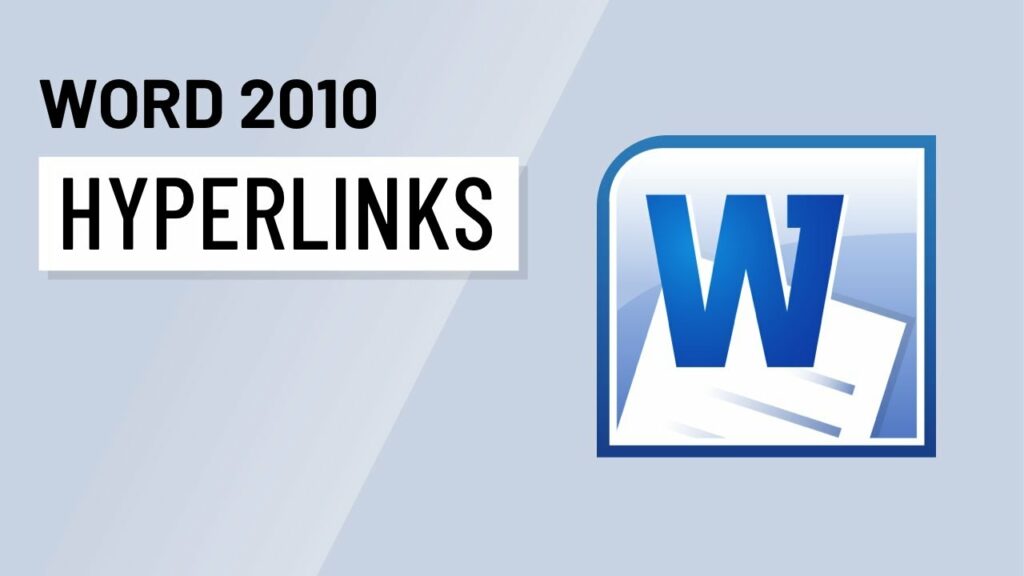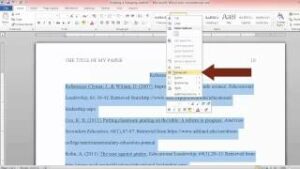Navigating the Web of Words: A Comprehensive Guide to Working with Hyperlinks in Microsoft Word 2010

Introduction:
In the dynamic world of document creation, Microsoft Word 2010 provides users with a powerful tool – hyperlinks – to bridge the gap between the printed and digital realms. In this extensive guide, we will delve into the intricacies of working with hyperlinks in Microsoft Word 2010, unraveling their functionalities, customization options, and best practices for seamlessly integrating links to enhance the interactivity and accessibility of your documents.
I. Understanding Hyperlinks in Word 2010:
- Definition and Purpose:
- Hyperlinks in Word 2010 serve as interactive elements that allow users to navigate between different parts of a document, external websites, email addresses, and even files. They enrich the document’s content by providing a direct path to additional information or resources.
- Types of Hyperlinks:
- Word 2010 supports various types of hyperlinks, including web links (URLs), email links, links to other parts of the document (internal links), and links to external files or documents.
II. Inserting Hyperlinks:
- Web Links (URLs):
- Insert web links by highlighting text, right-clicking, and selecting the “Hyperlink” option. Paste the URL to create a clickable link that directs users to a website.
- Email Links:
- Create email links by selecting text, right-clicking, and choosing “Hyperlink.” Enter the email address to allow users to open their default email client when clicking the link.
III. Creating Internal Links:
- Navigating within the Document:
- Establish internal links to navigate within the document seamlessly. This is particularly useful for long documents, allowing users to jump directly to specific sections.
- Bookmarks and Cross-References:
- Utilize bookmarks and cross-references to create internal links between different sections or elements in the document. This enhances navigation and streamlines access to specific information.
IV. Linking to External Files:
- Attachments and File Links:
- Link to external files or attachments within the document. This is beneficial for providing supplementary materials without cluttering the main content.
- Document Links:
- Create links to other Word documents or files. This feature is handy for referencing related documents or providing additional reading materials.
V. Formatting and Customizing Hyperlinks:
- Styling Hyperlinks:
- Customize the appearance of hyperlinks by changing their color, font, or underlining. This ensures that hyperlinks stand out and are easily recognizable.
- Removing Hyperlink Underlines:
- Adjust hyperlink formatting to remove underlines for a cleaner look. This is especially useful when hyperlinks are used for design elements rather than textual links.
VI. Managing Hyperlinks:
- Editing Hyperlinks:
- Edit hyperlinks by right-clicking on the link and selecting “Edit Hyperlink.” This allows users to modify the URL, email address, or other properties.
- Removing Hyperlinks:
- Remove hyperlinks while retaining the linked text. This is helpful when a document is undergoing revisions, and the hyperlinks need to be temporarily deactivated.
VII. Document Navigation with Hyperlinks:
- Table of Contents:
- Enhance document navigation by incorporating hyperlinks in a table of contents. Users can click on section headings to jump directly to the corresponding content.
- Internal Navigation Menus:
- Create internal navigation menus using hyperlinks for quick access to different sections or chapters within the document. This is particularly useful for lengthy documents.
VIII. Advanced Hyperlink Techniques:
- Hyperlinked Images and Shapes:
- Apply hyperlinks to images or shapes within the document. This is a creative way to make non-text elements interactive and engaging.
- Creating Image Maps:
- Explore the creation of image maps where specific regions of an image are hyperlinked. This technique is useful for interactive graphics and diagrams.
IX. Collaborative Document Editing with Hyperlinks:
- Sharing Documents with Hyperlinks:
- Collaborate seamlessly by sharing documents containing hyperlinks. Ensure that collaborators have access to the linked resources or files.
- Maintaining Link Consistency:
- Collaborators should be mindful of link consistency when editing documents. Updates or revisions should not compromise the integrity of existing hyperlinks.
X. Document Accessibility and Hyperlinks:
- Descriptive Link Text:
- Use descriptive link text that provides context. This enhances accessibility by making it clear where the link leads.
- Screen Reader Compatibility:
- Test documents with screen readers to ensure compatibility. Properly formatted hyperlinks contribute to a more accessible document.
XI. Mastering Hyperlink Techniques:
- Continuous Learning:
- Mastery of hyperlink techniques involves continuous learning and exploration of advanced functionalities for optimal document interactivity.
- Community and Online Resources:
- Engage with the community and explore online resources, tutorials, and forums to stay updated on the latest hyperlink features and best practices.
XII. Conclusion:
- Elevating Document Interactivity:
- By mastering the art of working with hyperlinks in Microsoft Word 2010, users can elevate the interactivity of their documents, providing readers with seamless navigation and access to additional resources.
- Enhancing User Experience:
- Striking the perfect balance between functionality and user experience, Word 2010’s hyperlink features empower users to create documents that not only convey information but also provide an interactive and enriched reading experience.
As you embark on the journey of working with hyperlinks in Microsoft Word 2010, you unlock the potential to transform your documents into dynamic and interactive pieces that seamlessly blend the digital and textual worlds. Embrace the diverse features, experiment with creative links, and empower yourself to create documents that engage and captivate your audience.





